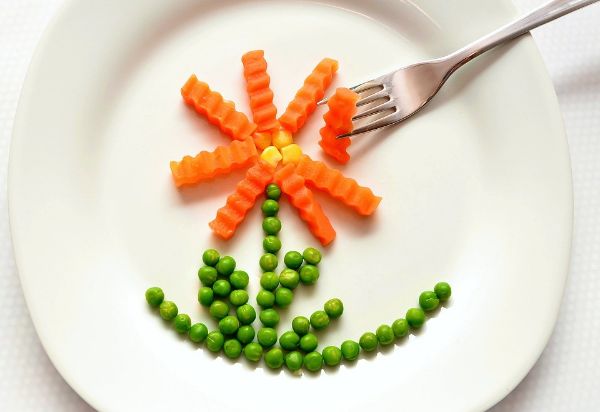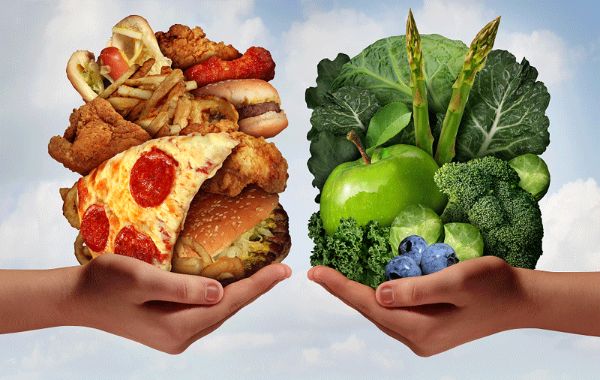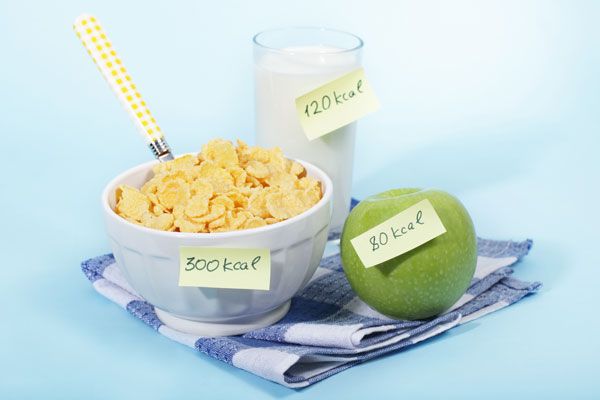Healthy eating habits don’t involve supervising your diet with an iron fist. They’re also not equivalent to a weight loss program. Knowing how to eat healthier means caring about your mind and your body, keeping a balanced life, and protecting your organism.

Nutrition can be a confusing topic. While fifty percent of nutritionists encourage you to definitely consume certain foods, the other fifty percent of them are doing the exact opposite. How do you know who to listen to, then? Luckily, not all foods ignite debates. Some of them have managed to become the center of a consensus between nutritionists. For example, take highly processed foods – the banes of our existence.
Why should you avoid processed foods? What nutrients are good for you? What do you need in order to develop healthy eating habits? Let’s dive right into the answers for these questions.
The Effects of Unhealthy Eating Habits
The first step to developing healthy eating habits is knowing what you should avoid. What kind of damaging foods do you need to remove from your diet? Typically, an unhealthy diet can be considered a regime that includes meals which fall under the following categories:
- Containing too much trans and saturated fats;
- Rich in cholesterol;
- Too much sodium;
- Abundant in added sugar;
- Too many processed ingredients;
- Not enough
Following an unhealthy diet can lead to biological malfunctions, to poor nutrient-to-calorie ratios, and afferent health problems. If you know the risks of this kind of diet, you also know why you need to try to avoid it.
Poor Nutrition
Your body needs nutrients to grow, to develop, and to function properly. Potassium, calcium, Vitamin D, and dietary fiber are key elements to a proper healthy lifestyle and depriving your body of them can have grave effects. Typical Western diets mostly contain packaged foods, processed meats, sugary snacks, and greasy fast foods and not nearly enough nutritional value.
Nutrition deficiency has been linked to a series of health issues, some of which can affect our lives for a short time period, and some of which can have devastating effects.
Stress, weariness, and the incapacity to lead a normal and active life are immediate results of a lack of healthy eating habits. In time, if we continue to persist in these malevolent dietary habits, we risk the development of much graver ailments and illnesses.
Possible Illnesses:
- Obesity;
- Tooth decay;
- Elevated blood pressure;
- High cholesterol;
- Heart disease and stroke risk;
- Type-2 diabetes;
- Osteoporosis;
- Types of cancer;
- Depression;
- Eating disorders.
Just how healthy eating habits can benefit both your body and your mind, an unhealthy diet can also branch out and leave serious marks on your psychic health. ADHD, Alzheimer’s disease, and even schizophrenia have all been linked to frequent consumption of unhealthy, low-in-nutrients diets.
Weight Gain
Even though the development of healthy eating habits for the sake of a slimmer figure shouldn’t be our main focus, the two are strongly linked together. An unhealthy diet low in nutrients can lead to weight gain or, more specifically, to a high BMI (Body Mass Index). A high BMI can be the result of:
- insufficient vegetables, fruits, and whole grains in your diet;
- too many fried foods and meats;
- consistent consumption of high-calorie beverages such as soda;
- lack of physical activity.
A healthy BMI is between 18.5 and 24.9. Once it exceeds 30, it’s considered obesity.
How to Develop Healthy Eating Habits

Once you know what constitutes an unbalanced and unhealthy diet, along with its risks, ridding yourself of the damaging foods that constitute it will take you closer to your healthy eating lifestyle.
The Key Is In the Portions
Don’t deprive yourself of the foods you love. The worst thing you can do is regulate your lifestyle with too much strictness and too many regulations. Everyone who’s ever followed a proper, healthy diet can attest that the best way to appease both your goal and desires is by eating a variety of foods.
Many point fingers at bread, pasta, sweets, and other known enemies of a slim silhouette. The truth is that they don’t need to completely vanish. Make sure you eat everything in small portions. Don’t make a habit out of eating bread with spaghetti every day and you should be safe. Longing after a piece of chocolate and refusing yourself this small moment of indulgence is equally bad. This is going to lead to you associating dieting to restrictions and depression.
In time, this will only make it harder for you to stick to a diet and to shape up your healthy eating habits. Long story short, allow yourself a treat or two once in a while. Eat a variety of foods as long as they’re in small portions.
ALTERNATIVELY: Stick to Daily Menus
If you just don’t trust yourself enough when there is a table filled of tens and tens of different foods, then the best thing you can do is the exact opposite. Healthy eating habits are easy to develop, something that can be attested by the fact that there isn’t a single path you can follow. You can either eat a little bit from everything or you can stop at three-four meals and look no further.
There are people out there that always keep a watchful eye on the amount of calories they consume every day. And perhaps you’re one of them. Many people that wanted to shed off a considerable number of pounds pursued a diet that involved them alternating between the same three-four meals every day. The same meals for breakfast, the same meals for lunch, and the same meals for dinner.
There are several reasons why this method works:

- It’s the best approach for people who enjoy keeping track of their calorie count. It’s much easier to calculate the calories for three meals than to sit down and analyze all of the different foods you’ve eaten.
- It works best for people that do require some form of restraint in order to get to their desired healthy eating habits.
- It’s just easy. You find these dishes that you really enjoy, that can cover your daily calorie allotment, and that guarantee a healthy lifestyle. Why look any further?
Take Baby Steps
The biggest mistake you could make is to suddenly flip the table over and expect to slip into a new king of diet with no difficulties whatsoever. Abrupt changes to your lifestyle, even if they’re for the best, can actually make things a lot more difficult on you. Imagine if you love hamburgers, chocolate, and white bread.
Then, all of sudden, you remove them from your life all at once and replace them with spinach, spinach, and spinach. That’s a guaranteed ticket for depression and a disrupted balance.
Instead, you should gradually induce these new healthy eating habits. Start slowly. For example, set yourself up to eat more salads without removing any of the things you love first, as unhealthy as they may. Here are some of the changes we recommend for the first change of the transition.
Ways to Slowly Implement a Healthy Diet
- Get cooking. If you aren’t already, you should really consider learning how to prepare your own meals. As opposed to eating at a restaurant or something prepared by a parent, a friend, or a significant other, you gain a new level of control. You decide what you want to eat and you get to decide what ingredients go into your meals.
- Drink water. Drinking the recommended amount of water on a daily basis can have a myriad of benefits. For starters, proper hydration can prevent tiredness, headaches, and low-energy levels, which are common dehydration symptoms. Also, we often mistake thirst for hunger. By keeping our bodies constantly tuned to the necessary amounts of water, we can avoid accidentally giving our organisms food instead of water.
- Find alternatives you like. Instead of fried chicken, try eating grilled fish. This is an example of replacing harmful trans fats with healthier fats. However, just like we mentioned above, the transition can be rather difficult. For the first week, alternate between the two dishes until you get used to the taste of grilled fish. Then, gradually make fried chicken-related meals less and less frequent until you completely remove them from your diet. The important bit here is to make sure that the healthy alternatives to your favorite dangerous foods are ones you can enjoy.
- Read labels. You may not have control over the ingredients contained by the products on store shelves, but you can be informed. Reading the labels is crucial to understanding which foods you need to avoid and which are green-lit. You might be surprised by the amount of foods that claim to be healthy but hide large amounts of processed substances, sugars, or unhealthy fats.
Shopping Habits

It’s easy to slip into “the dark side” when your pantry and fridge are filled with ingredients that would make the perfect unhealthy meal. You can easily avoid this by making sure none of these ingredients can be found on your shelves. How? By scheduling regulated shopping sessions and by walking through the aisles with a shopping list in hand.
Having a plan before you hit the store is not only useful for your budget, but for the development of healthy eating habits too. Establish what kind of dishes you’d like to eat this week and then create a shopping list accordingly. Settle on a certain day reserved for shopping sessions. And because we know it’s inevitable, leave a door open for two-three unflattering treats too, but make sure not to go overboard. Allow yourself the benefit of a bottle of soda once in a blue moon, but not more.
PRO TIP: Avoid shopping on an empty stomach as it can lead to impulsive buys. If you’re hungry while navigating an aisle filled with tempting foods, you’re a lot more likely to lose your head and throw one into the cart. Instead, make sure you’ve properly eaten before so you don’t end up making purchases based on the whims of your stomach.
Don’t Skip Breakfast
Easier said than done, especially in a time when we find little to no time to spare for morning activities. We wake up, we grunt, we brush our teeth, we brew a pot of coffee, and this is usually the extent of what we consume in the morning. That’s a very wrong move. At least, according to the studies that have linked regular consumption of breakfast to weight loss and a healthy lifestyle.
The reason for this is because it seems like there is a direct correlation between overeating and breakfast, or lack thereof. Those that decide to jolt out the door without their breakfast are a lot more likely to indulge in a lot more calories throughout the rest of the day. It’s easy to understand why, too: the body didn’t receive its morning dose of nutrients and is now begging for something to make up for it.
Make Food Fun!
One common misconception is that healthy eating habits are equivalent to eating one plate after another of boring steamed vegetables. If you’re headed down that path, it will only make it harder for you to really enjoy what you’re eating and stick to your healthy eating habits. Instead, make use of the magic of the Internet and browse through the hundreds of available recipes that can make the dullest of veggies mouth-watering and unique.
Whitelist These Foods
Eat unprocessed, whole foods. Vegetables, fruits, and whole grains should be the foundation of your regime, especially the latter. Sometimes it can be all for naught if you eat plenty of veggies and fruits but pair it up with harmful grains. So, next time you head for the bakery, choose wholegrain or wholemeal bread instead of regular one.
Moreover, fill your shopping cart up with brown rice (instead of white rice), oats, wholegrain pasta, quinoa, and buckwheat. The difference will make itself seen in no time.
Final Words
The key to developing healthy eating habits isn’t to place a ban on all the foods you like or to eat buckets of raw broccoli every day. These are all misconceptions that can be easily broken down. The real key is to take it all slowly, to gradually welcome the new regime, and to make your life easier through a few easy tips and tricks.
